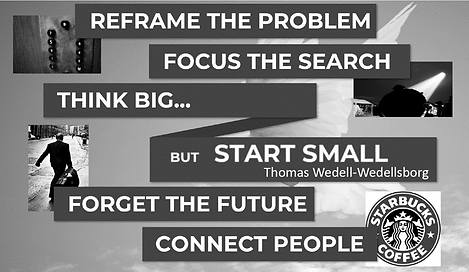Master the Q&A
Q&As tend to be the least exciting part of a talk, dreaded by speakers and audiences alike.
It doesn’t have to be that way. Here's how to run a world-class Q&A session.
1. Share something after the Q&A
Q&As are unpredictable. Maybe the last question is weird. Or maybe people are quiet (“More questions? Anyone?”) Not great ways to end a talk.
To avoid this, don’t end your talk with the Q&A. Instead, end with a ‘closer’, meaning a short story or example, like this:

By having a closer, you control how your talk ends – which matters a lot for how people remember it.
Here are a few pointers for picking your closer:
-
Don’t introduce new ideas. Rather, pick something that reinforces your key message.
-
Speak to the heart more than the brain.
-
3-4 minutes is a good length: short, yet long enough to feel substantial.
-
If you run out of time, use a single slide with a punchy quote instead.
Remember to tell the event host (and the tech team) that you have a closer after the Q&A, just so they don’t interrupt you.
2. Show a summary slide
People's questions will often focus on your last point, as that’s what is freshest in their minds. This limits the Q&A.
For a richer discussion, show a summary slide when you start the Q&A, and leave it up during the discussion. Here's an example from a talk on innovation.

A good summary slide:
-
Has one to three words for each main idea you shared in the talk.
-
Shows a reminder image for the key examples. In the example above, the images are copied from earlier slides in the talk.
-
Includes your name or social media handle (as people often post photos of the slide). You can also show your book or other useful info.
If your talk builds on a core model or framework, you can use that instead (or integrate it).
3. Ease people into the Q&A
If the switch to Q&A is sudden – “So that’s it; now, what questions do you have?” – you’ll be met with an awkward silence.
For a smoother transition:
-
Do a 30-second ‘filler’ talk as you open for questions, giving people time to switch gears.
-
Ask for reactions, not just questions. Not all comments will fit neatly into the question format.
-
Show the summary slide.
Here’s a word-for-word example of how you can start a Q&A. Notice how the first line sets up the closer.

For more advice on Q&A, check out the companion guides Handle Tough Questions and Four Common Q&A Problems.